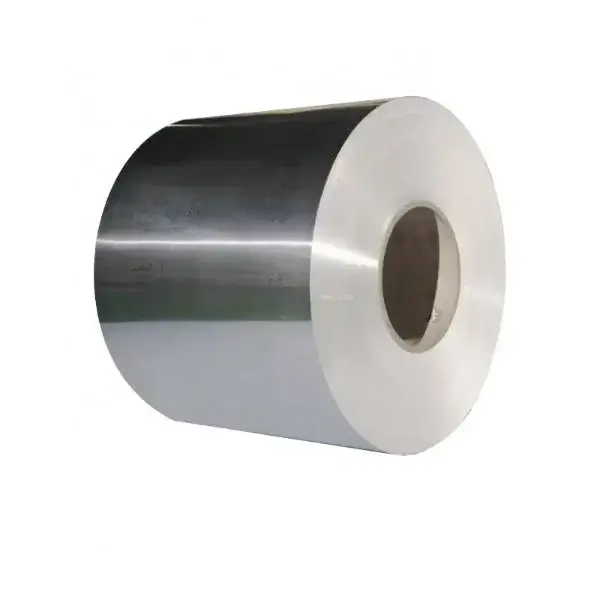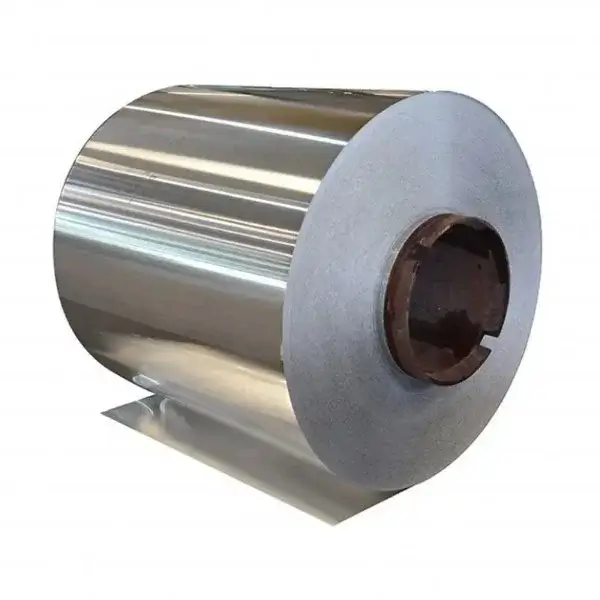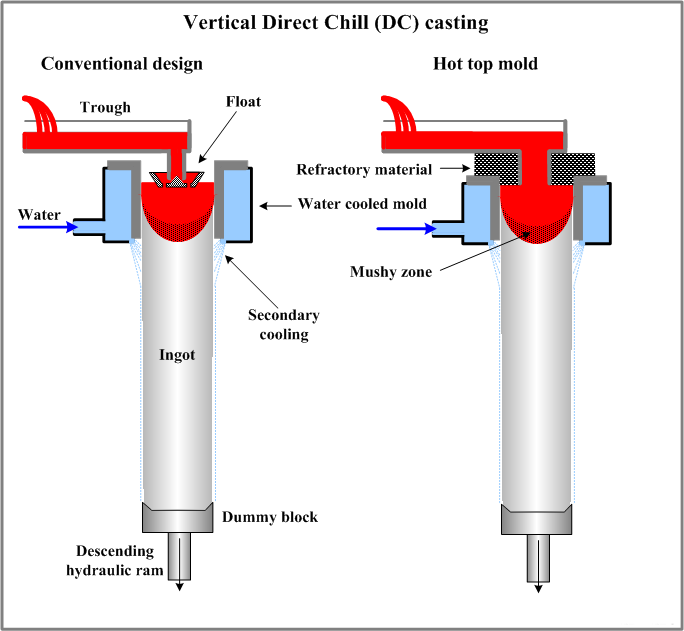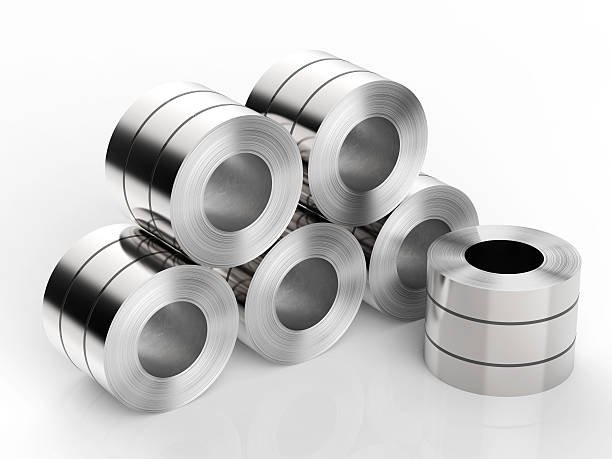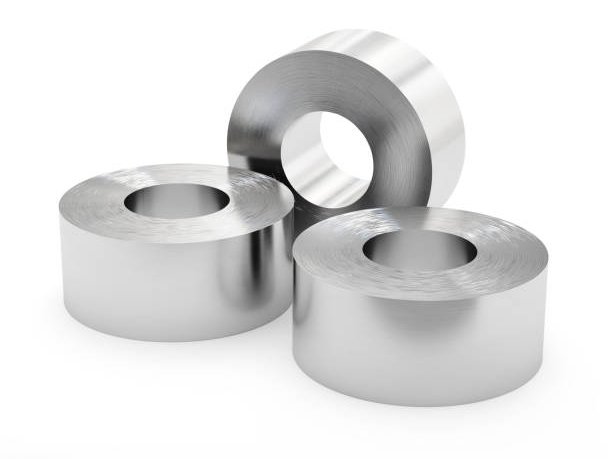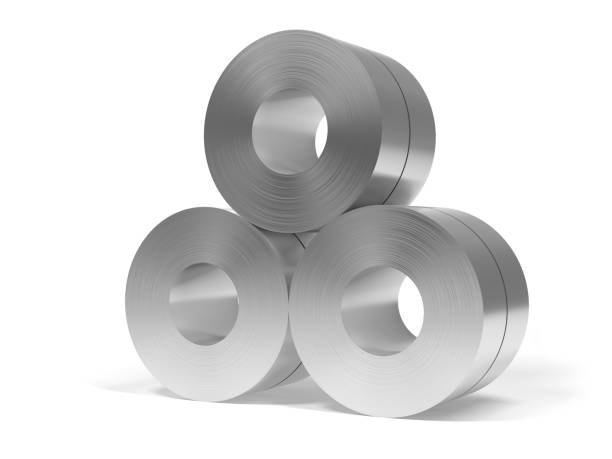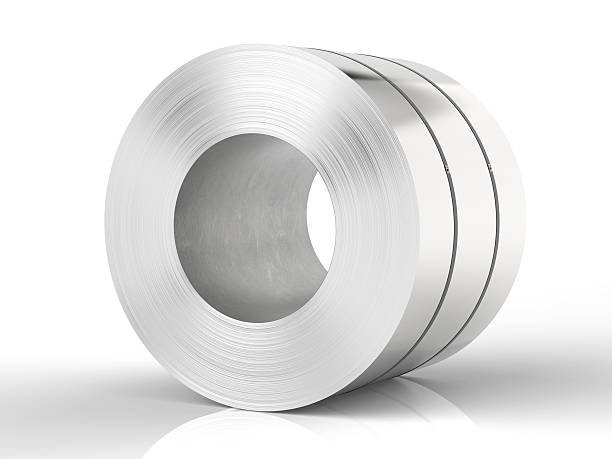5083 Aluminum Coil
5083 Aluminum Coil
Applications: Lithium Battery Separator, Battery Side Plate, Auto Parts, Fuel Tank, Oil Pipe, Ship Side Bottom Plate, Deck, Ship Plate, Sealed Pressure Vessel, Tank Car, Liquid Tank Car, Refrigerated Truck, Refrigerated Container, High Pressure Switch, Oxygen Generator Tower, Etc.
| Width: 100-2650mm | ||
| Thickness: 0.2-10mm | ||
| Length: Customizable as required | ||
| Temper: F, O, H12, H14, H16, H18, H22, H24, H26, H28, H32, H34, H36, H38, H111, Etc. | ||
| Mother Coil: DC or CC Aluminum Coil | ||
| Surface: Oxidation, Precoating, Mirror Finishing, etc. | ||
| Free Sample Size: A4 Paper Size | ||
| MOQ: 3-5T | ||
| Payment Terms: T/T, L/C, D/P | ||
| Delivery Time: Normally Within 15-30 Days |
In today’s rapidly developing industrial field, 5083 aluminum coil is an outstanding representative of Al-Mg-Si high magnesium alloy. It has excellent corrosion resistance, weldability, and good cold working performance, and it is durable, environmentally friendly, and economical.
ENAW-AlMg4.5Mn0.7 5083 aluminum coil properties
| 5083 Aluminum Coil Property | Value |
|---|---|
| Length | Customizable As Required |
| Width | 100mm-2650mm |
| Thickness | 0.2mm-10mm |
| Temper | F, O, H12, H14, H16, H18, H22, H24, H26, H28, H32, H34, H36, H38, H111, Etc. |
| Application Market | Welding Parts For Ships, Automobiles, Aircraft And Metro Light Rail Transit Vehicles, Exterior Plates, Decks, Ship Plates On The Side And Bottom Of The Ship, Tank Cars, Liquid Tanks, Refrigerated Trucks, Oil Pipes, Lithium Battery Dividers, Battery Side Plates, Fireproof Sealed Pressure Vessels, Refrigerated Containers, High Pressure Switches, Oxygen Generator Towers, TV Towers, Drilling Equipment, Missile Or Armored Vehicle Parts And Welding Wire Materials, Etc. |
| Surface | Oxidation, Precoating, Mirror Finishing, Etc. |
| Free Sample Size | A4 Paper Size |
| MOQ | 3-5T |
| Delivery Time | Normally Within 15-30Days |
ENAW-AlMg4.5Mn0.7 5083 aluminum coil is available in common H18, H22, H24, H32, H34, H38 and other states. The highly corrosion-resistant 5083 H116 aluminum roll, with its excellent anti-slip and anti-rust performance, is a popular choice. It has no oil spots, scratches, or neat cutting edges, making it commonly used on ships, yachts, cruise ships, and other hulls. Its good fatigue resistance, welding performance, and equal processing and forming performance to other alloys ensure its durability and safety, reassuring potential buyers.
With its low density, high strength, and good plasticity, the alloy is easy to process into various marine, automotive lightweight, and tank car aluminum plates. After anodizing treatment, the surface becomes more beautiful and durable, making it suitable for high-end applications. The 5083 aluminum coil’s high-quality surface finish, enhanced by an anodizing treatment, is sure to impress with its aesthetic appeal. It has shown great application potential in many fields, such as shipbuilding (for hulls and superstructures), aerospace (for aircraft components), the automobile industry (for lightweight vehicle parts), architectural decoration (for decorative elements), and Marine engineering (for offshore structures and equipment).
In the production process of Wantai Aluminum’s 5083 aluminum plate, a small amount of Be element is specially added. This element significantly reduces the ingot’s crack tendency, improving the roll plate’s surface quality. The addition of Be element is a testament to our commitment to delivering superior products. We offer aluminum coil thicknesses ranging from 0.2mm to 10mm, widths up to 100-1600mm, and lengths up to 6000mm tailored to customer requirements. You are welcome to consult if there is a demand for an order.
ENAW-5083 Aluminum Alloy Chemical Composition
5083 Aluminum Coil DC/CC International Alloy designation (For Reference)
The parameters of the 5083 aluminum sheets and prepainted 5083 aluminum coils are identical to those of the International Alloy Designations System for 5083 Aluminum coils.
| Alloy Series | National(GB) | America(AA) | Canada(CSA) | France(NF) | Britain(BS) | Germany(DIN) | Japan(JIS) | Russia(GOST) | EU/EN(EAA) | Internal Standard(ISO) |
|---|---|---|---|---|---|---|---|---|---|---|
| 5000 Series | 5083 | A95083 | 5083 | 5183 | 5083 | AlMg4.5Mn AlMg4.5 3.3547 | 5082 | 1540 | ENAW-5083 ENAW-AlMg4.5Mn0.7 | 5083 AlMg4.5Mn0.7 |
The 5083 aluminum coil is another representative of an Al-Mg alloy aluminum material. It has a chemical composition that’s been carefully balanced to achieve optimal performance. The main elements and their contents are as follows:
Influence of elements on material properties:
- The addition of magnesium significantly improves the corrosion resistance and strength of the material, making 5083 aluminum coils perform exceptionally well in harsh environments.
- Cu & Mg: Form a strengthening phase, improve the hardness and strength of the material, and increase the tensile strength and yield strength while maintaining good flexibility.
- The micro-addition of silicon elements optimizes the material’s microstructure, helps to enhance thermal stability and heat resistance, reduces the coefficient of thermal expansion, and improves service performance and weldability in high-temperature environments.
AlMg4.5Mn 5083 Aluminum Coil Physical Property
The 3.3547 aluminum alloy performs well in terms of physical properties and is the first choice for lightweight materials. The AlMg4.5Mn aluminum alloy sheet is more than lightweight. It’s also highly efficient in heat dissipation and electrical conductivity, ensuring top-notch performance in applications requiring efficient heat exchange or electrical conduction.
Al-Mg4.5Mn0.7 5083 Aluminum Coil Mechanical Property
The 5083 aluminum coil in non-heat treatment alloy boasts exceptional strength performance. With its high material strength, good flexibility, and excellent processing properties, this material can withstand significant external force and absorb impact energy to ensure safety and structural integrity. Moreover, with its low density and lightweight nature, the 5083 aluminum coil in non-heat treatment alloy effectively reduces the structure’s overall weight. This enhances the structure’s economy and contributes to environmental protection, aligning with the growing need for sustainable solutions.
Data source: The above data is derived from the ASTM B209 standard and material hardness test report. It’s important to note that the specific value may vary depending on the material state (such as annealed state, work hardening state, etc.) and the test method used, ensuring a comprehensive understanding of the data.
Machinability Property
When talking to AlMg4.5Mn0.7 alloy’s processability performance, the 5083 aluminum coil is a dream to work with. 55083 aluminum coil is a versatile material that is easy to cut and bend, suitable for a variety of complex shape processing, including laser cutting, water cutting, and other cutting methods. Trim neatly, no burrs, cracks, rust, waves, scratches and other defects and damage.
anti-corrosion property
5083 aluminum coil is a high magnesium alloy with excellent corrosion resistance. Its surface is easy to form a dense oxide film, which effectively blocks the intrusion of corrosive media, especially in the seawater environment and various chemical media. According to the ASTM G34 standard salt spray test, 5083 aluminum coils under continuous spray conditions show very high corrosion resistance and are suitable for long-term use in harsh environments. Furthermore, 5083 alloy is also ideal for various chemical media, such as acid and base solutions, showing a wide range of application adaptability.
In addition, the diverse and flexible surface treatment of 5083 aluminum coil provides many options for its corrosion resistance. From anodizing to electroplating, polishing to spray painting and other processes, these different treatments can provide products with a wide range of appearance and performance characteristics, providing exciting customization options. Such as a mirror color-coated aluminum coil, through rolling, polishing, and other processes, so that the surface of the plate achieves the mirror effect, and then with the roller coloring technology, can form a variety of gorgeous colors, widely used in the field of decoration. For cost-effective and practical consideration, the surface color-coated polyester (PE) coating and Polyvinylidene Difluoride (PVDF) coating have a bright color and strong adhesion; the product has good corrosion and weather resistance. See the detailed introduction as follows for details.
Advanced Color-Coated Process
Polyester-Coated Pre-Coating Technology (PE Coating)
The polyester coating is an anti-UV UV polyester resin coating; its primary component uses polymers containing ester bonds in the main chain as monomers, adding alkyd resin and an ultraviolet absorber. After baking polyester coating on the surface of aluminum (aluminum sheet, aluminum coil) many times, it forms a solid film with protection and decoration. The polyester coating protects color-coated aluminum products (aluminum sheets, aluminum coils) from exposure to the atmosphere due to temperature differences, freeze-thaw cycles, corrosive gases and microorganisms, ultraviolet radiation, wind, rain, frost, and snow.
Furthermore, the polyester coating is a powerful tool for enhancing the visual appeal of aluminum substrate products. It offers a rich color palette for color-coated aluminum products, and depending on the desired gloss, the polyester coating can be divided into matte and highlight series. This aesthetic enhancement ensures that the color-coated aluminum coil not only has good gloss and smoothness but also superior texture and feel, increasing the sense of layer and three-dimensionality. Its ability to enhance the visual appeal makes it a perfect fit for interior decoration and advertising boards.
Polyvinylidene Difluoride Coating Technology (PVDF Coating)
Fluorocarbon coating is PVDF resin. It mainly refers to vinylidene fluoride homopolymer or vinylidene fluoride and other small amounts of fluorinated vinyl monomer copolymer coatings. The fluoric acid-base material with a fluorine/carbonization bond has a stable and firm chemical structure, which makes the physical properties of fluorocarbon coatings different from those of general coatings.
Fluorocarbon coatings can be divided into traditional fluorocarbon coatings and nano-fluorocarbon coatings according to the film formation structure of the surface. In 1965, the Pennwalt Chemical Company of the United States, for the first time, used fluorocarbon paint for the coating of indoor and outdoor aluminum in high-grade buildings. A wide range of color selectivity, solemn appearance, and durability added luster to many magnificent curtain wall buildings around the world.
Fluorocarbon coatings, in addition to their mechanical properties of wear and impact resistance, demonstrate exceptional long-term fading and UV resistance in harsh climates and humid environments. After high-temperature grilling, the molecular structure of the coating becomes tight, ensuring superior weather resistance. The manufacturer’s guarantee of the service life of the coating has been extended from 10 years to 15 years, and now even exceeds 20 years, providing a secure and long-lasting investment.
Fluorocarbon coatings have been extensively tested and compared with super and general coatings by American research institutions. The samples of the coatings were exposed to hot sunlight in Florida, the United States, and to the harsh environment of humid salty air for 12 years. This rigorous testing proves that the stability and durability of fluorocarbon coatings are 30%-80% higher than those of the other two coatings, providing reassurance about their reliability. Fluorocarbon coatings are a dependable choice for various harsh environments, especially for indoor and outdoor decoration in public places, commercial chains, exhibition advertising, and other decorations and displays.
Anti-corrosion Property
Because of the presence of magnesium in its composition, the 5052 aluminum coil can effectively block the erosion of various corrosive media, including acid, alkali, salt, and other corrosive environment. Therefore, the 5052 alloy aluminum coil has naturally good corrosion resistance and is widely used in various corrosive environments, especially in Marine or chemical corrosion environments; its corrosion resistance is particularly prominent. Under exceptional circumstances, the corrosion resistance of 5052 aluminum coil is better than that of pure aluminum plate such as 1060 aluminum alloy. In addition, the 5052 aluminum coil can also further improve its corrosion resistance through anodizing and other surface treatment processes to ensure that it can maintain good performance in harsh environments such as Marine, chemical, and construction. This makes the 5052 aluminum coil ideal for ships, automobiles, chemical equipment, and other fields.
Environmental Protection and Recyclability
5052 aluminum coil is an environmentally friendly metal material, with relatively little waste generated during production and processing. At the same time, aluminum has good recyclability and can realize the recycling of resources. This helps to reduce environmental pollution and waste of resources.
In general, 5052 aluminum coil with its unique chemical composition, excellent physical properties, excellent mechanical properties, diversified processing properties, excellent corrosion resistance, and good welding performance, as well as beautiful and durable characteristics, in aerospace, automotive, shipbuilding, construction, electronic products, and other fields have shown a wide range of application prospects. As a professional sales staff, we know the importance of product quality, whether it is the pursuit of lightweight, high-strength aerospace field or the building decoration industry with strict requirements for beauty and corrosion resistance. We will happily provide customers with high-quality, excellent 5052 aluminum coil and professional technical support. Welcome to inquire.
Differences Between DC Casting And CC Casting
The thickness of 0.7 mm refers to the thickness of aluminum coils, commonly used in various industries for roofing, cladding, and fabrication applications. So, comparing the quality of aluminum coils with a 0.7 mm thickness through some details on DC and CC Casting could help us get a clear and reasonable result.
DC (Direct Chill) Casting
- The direct chill casting process produces a magnificent and uniform aluminum grain structure.
- This fine-grain structure gives aluminum strength, formability, and corrosion resistance compared to other casting methods.
- Direct chill-casting aluminum coils are often used in applications that require deep drawing or complex forming, such as automotive body panels, heat exchangers, and food/beverage cans.
- The 0.7 mm thickness is on the thinner end for DC casting aluminum. However, this gauge is still suitable for many formed and fabricated components.
CC casting (Continuous Casting)
- Continuous Casting is a more economical process than DC casting.
- CC-casting aluminum billets, blooms, or slabs have a slightly larger grain structure than DC-casting. However, it is still suitable for a wide range of applications.
- CC-casting aluminum coils with a thickness of 0.7 mm are commonly used for general sheet metal fabrication, roofing, siding, and other building/construction applications.
- The 0.7 mm thickness provides a good balance of formability, strength, and lightweight properties for these types of uses.
In summary, DC-casting aluminum coils have superior mechanical properties and surface quality compared to CC-casting but at a slightly higher cost. Even so, neither DC nor CC-casting aluminum coils with a thickness of 0.7 mm can exhibit good flatness, surface quality, and dimensional tolerance and can be used in different applications depending on the project’s specific requirements.
The choice between the two kinds of production technology depends on the end product’s specific performance requirements, economic considerations for the specific application, and customer requirements. DC casting is preferred when superior formability and strength are needed. In contrast, CC casting is more economical for less demanding applications.
We provide all the data from authoritative third-party testing agencies, including AQSIQ, the International Organization for Standardization, etc. These institutions have comprehensively evaluated the performance of 3105 aluminum coils through strict test methods and evaluation standards. Customers can inquire about the relevant report or contact us for more detailed information.
ENAW-AlMg4.5Mn0.7 5083 Aluminum Coil Chemical Composition
The 5052 aluminum coil, sheet, and foil parameters are similar or identical to those of the International Alloy Designations System for 5251 Aluminum Alloy.
| Chemical Element | Si | Fe | Cu | Mn | Mg | Cr | Ni | Zn | V | Ga | Ti | Zr | Each | Total | Al |
|---|---|---|---|---|---|---|---|---|---|---|---|---|---|---|---|
| Content (%) | ≤0.40 | ≤0.40 | ≤0.10 | – | 4.00-4.90 | 0.05-0.25 | – | 0.25 | – | – | 0.15 | – | ≤0.05 | ≤0.15 | Remainder |
AlMg4.5Mn0.7 ENAW-5083 Aluminum Coil Technical Data
| Length | Customizable As Required |
| Width | 100-2650mm |
| Thickness | 0.2-10mm |
| Temper | F, O, H12, H14, H16, H18, H22, H24, H26, H28, H32, H34, H36, H38, Etc. |
| Application Market | Fuel Tank, Oil Pipe, Car Wheel Hub, Hood, Body Skin, Skeleton, Cabin Decoration, Curtain Wall, Ceiling, Battery Housing, Beverage Cans, Food Boxes, Pump Body, Valves, Precision Mechanical Workpiece, Mold Manufacturing, Etc. |
| Mother Coil | DC or CC Aluminum Coil |
| Surface | Oxidation, Precoating, Mirror Finishing, Etc. |
| Free Sample Size | A4 Paper Size |
| MOQ | 3-5T |
| Payment Terms | T/T, L/C, D/P |
| Delivery Time | Normally Within 15-30 Days |
Temper designations (For Reference)
| Temper | Definition |
|---|---|
| O | Annealed, Soft |
| H | Strain hardened |
| H12 | Strain Hardened, 1/4 Hard |
| H14 | Strain Hardened, 1/2 Hard |
| H16 | Strain Hardened, 3/4 Hard |
| H18 | Strain Hardened, Full Hard |
| H22 | Strain Hardened and Partially Annealed, 1/4 Hard |
| H24 | Strain Hardened and Partially Annealed, 1/2 Hard |
| H26 | Strain Hardened and Partially Annealed, 3/4 Hard |
| H28 | Strain Hardened and Partially Annealed, Full Hard |
| F | Fabricated (as cast) |
| T | Thermally treated to produce stable tempers other than F, O or H |
| T1 | Cooled from an elevated temperature shaping process and naturally air-set. |
| T2 | Cooled from an elevated temperature shaping process, cold worked and naturally air-set. |
| T3 | Solution heat treated, cold worked and naturally air-set. |
| T4 | Solution heat treated and naturally air-set. |
| T5 | Cooled from an elevated temperature shaping process and then artificially age-hardening. |
| T6 | Solution heat treated and then artificially air-set. |
| T7 | Solution heat treated, artificially aged, and then cold-worked |
| T8 | Solution heat treated, cold worked, and then artificially age-hardening |
| T9 | Solution heat treated, artificially aged, and then cold worked |
| W | Solution heat treated (unstable temper) |
ENAW-AlMg4.5Mn0.7 5083 aluminum coil properties
| Physical Property | Value |
|---|---|
| Density | 2.7g/cm3 |
| Hardness Brinell | 68-75HB |
| Melting Point | 625°C |
| Thermal Expansion | 24.2 x10^-6 /°C |
| Thermal Conductivity | 110-140W/m.K(At 100 °C) |
| Electrical Resistivity | 0.044 x10^-6 Ω.m |
| Mechanical Property | Value |
|---|---|
| Tensile Strength(H14) | 340-400MPa |
| Compressive Strength(F) | 260-270MPa |
| Yield Strength | ≥110MPa |
| Shear Strength | ≥125 MPa |
| Modulus of Elasticity | ≥70Gpa |
| Elongation | ≥5% |
| Elongation at Break | ≥2.3% |
ENAW-AlMg4.5Mn0.7 5083 aluminum coil Corrosion resistance
The corrosion resistance of ENAW-AlMg4.5Mn0.7 5083 aluminum coil in acid and alkali is roughly as follows
| Medium | Anti-corrosion Capability |
|---|---|
| Ocean Water | weak |
| Salt | weak |
| Organic Acid | Common |
| fluorine, chlorine, bromine, Lodine | Poor |
| hydrochloric acid, hydrofluoric acid, acetic acid | Poor |
| alkaline, ammonia water, Lime water | Poor |
| dilute sulfuric acid, dilute nitric acid | Poor |
| ammonia Gas, sulfurous gas | Good |
| Cold concentrated sulfuric acid, Cold concentrated nitric acid | Stable |
| petroleum, kerosene, ethyl alcohol, benzene, organic compound, etc | Stable |
ENAW-AlMg4.5Mn0.7 5083 Aluminum Coil Applications
5083 aluminum alloy is a high magnesium alloy with good strength, corrosion resistance, and machinability in non-heat treatment alloys, as well as a beautiful surface and corrosion resistance after anodization. In addition, the main alloying element in 5083 alloys is magnesium, which has good corrosion resistance, weldability, and moderate strength. The excellent corrosion resistance makes 5083 alloy widely used in maritime applications such as ships, as well as automobiles, aircraft welding parts, subway light rail, pressure vessels requiring strict fire protection (such as liquid tank trucks, refrigerated trucks, refrigerated containers), refrigeration units, TV towers, drilling equipment, transportation equipment, missile parts, armor, etc.
Marine Vessel Industry
5083 aluminum coil is the material of choice in shipbuilding. It is widely used in critical components such as exterior panels, decks, and hull internals on the sides and bottoms of ships. Its excellent corrosion resistance and high strength characteristics enable the vessels to maintain long-term durability in harsh Marine environments. According to industry statistics, ships built with 5083 aluminum coils/aluminum plates can reduce the weight of the hull by more than 20% compared with traditional materials, significantly improving navigation efficiency and fuel economy. (Source: IMO Report)
Transportation Industry: Lightweight, Energy Saving and Emission Reduction
In vehicles such as automobiles and subway light rail, 5083 aluminum coil is widely used in critical parts such as body structure parts, chassis parts, fuel tanks, oil pipes, and high-pressure switches because of its lightweight, high strength, easy processing, and excellent weldability. This can improve the vehicle’s overall performance and effectively reduce energy consumption and emissions, in line with the green development trend of modern transportation.
Architectural Decoration and Building Materials: The Perfect Combination of Architectural Aesthetics and Practicality
In modern architecture, the 5083 aluminum coil adds beauty and texture to the building in construction because of its good surface treatment performance, formability, and rich color choices. Various visual effects can be presented through anodizing, spraying, and other processing processes to improve the beauty and overall quality of the building. In addition, its corrosion resistance and lightweight characteristics also meet the high requirements for material performance in modern buildings. They are widely used in facade decoration and internal structures such as curtain walls, ceilings, roofs, doors, and other interior decoration materials.
Packaging Materials: Innovative Applications in the Packaging Industry
In the food, beverage, and cosmetics industries, the choice of packaging materials is directly related to the quality and safety of the product. EN AW-5083 aluminum coil has become the ideal choice of packaging material for these industries because of its lightweight, non-toxic, tasteless, and corrosion-resistant properties. Therefore, in producing cake trays, candle holders, beverage cans, food boxes, and tea cans, 5083 aluminum coils maintain the product’s shape and beauty and ensure its health and safety during transportation and storage. the preferred packaging material for food, medicine, and other industries.
Pressure Vessels and Refrigeration Equipment
5083 aluminum coil is also widely used in pressure vessels requiring strict fire protection, such as LNG tanks, liquid tank trucks, refrigerated trucks, refrigerated containers, etc. Its excellent corrosion resistance and good sealing properties ensure the safety and durability of containers such as offshore platforms in extreme environments. At the same time, the 5083 aluminum coil has also shown extraordinary application potential in refrigeration equipment, drilling equipment, and other industrial fields.
In summary, it is not difficult to see from the above many applications that the EN AW-5083 aluminum coil, with its lightweight, high strength, high corrosion resistance, easy processing, and easy recycling for environmental protection, and other excellent performance characteristics, has been widely used in many fields, and it is irreplaceable. With the progress of science and technology and the continuous market expansion, the application prospect of the 5083 aluminum coil will usher in a broader market prospect and application space.
Lastly, we offer flexible, customized services to produce EN AW-5083 aluminum coils of different sizes, thicknesses, surface treatments, and performance requirements according to our customers’ needs. At the same time, we provide professional technical support and after-sales service to ensure that customers get timely technical support and solutions during the use process.Please feel free to contact us for orders.
WanTai Aluminum Industry Product List
| Aluminum Alloy Series | Aluminum Grade |
|---|---|
| 1000 Series | 1050, 1060, 1070, 1100, etc. |
| 2000 Series | 2014, 2017, 2024, 2A11, 2A12, 2A14, etc. |
| 3000 Series | 3003, 3004, 3005, 3104, 3105, 3A12, etc. |
| 4000 Series | 4004, 4032, 4043, 4047, 4A03, 4A11, 4A13, 4A17, etc. |
| 5000 Series | 5005, 5052, 5052A, 5052B, 5059, 5083, 5086, 5182, 5252, 5454, 5754, 5A02, 5A03, 5A05, 5A06, 5M49, 5M52, etc. |
| 6000 Series | 6005, 6005A, 6060, 6061, 6063, 6082, 6101, etc. |
| 7000 Series | 7005, 7050, 7075, 7A04, 7A09, etc. |
| 8000 Series | 8011, 8076, 8077, 8079, 8176, 8177, 8276, 8280, etc. |
| Types | Aluminum Coils, Aluminum sheets, Aluminum foils, Aluminum strips, Checkered Plates or diamond plates, etc. |
| Length(mm) | customizable as required. |
| Width(mm) | 40mm-2650mm |
| Thickness(mm) | 0.006mm-800mm |
| surface | oxidation, Precoating, wire drawing, Mirror Finishing, embossing, etc. |
| payment | T/T, L/C, D/P, etc. |
| package | Wrap in plastic or kraft paper with Moisture-proof desiccant. Pack in fumigated wooden cases and brackets. |
Different Specifications of Aluminum Coil Parameters
The following are examples of different specifications of aluminum rolls and their weight and length information for Reference:
| specification | Thickness(M) | Area(m2) | Weight(Kg) |
|---|---|---|---|
| 0.5mmx1mx1000m | 0.0005 | 1000 | 1,350 |
| 0.6mmx1mx1000m | 0.0006 | 1000 | 1,620 |
| 0.8mmx1mx1000m | 0.0008 | 1000 | 2,160 |
| 1.0mmx1mx1000m | 0.0010 | 1000 | 2,700 |
| 1.5mmx1mx1000m | 0.0015 | 1000 | 4,050 |
| 2.0mmx1mx1000m | 0.0020 | 1000 | 5,400 |
| 2.5mmx1mx1000m | 0.0025 | 1000 | 6,750 |
| 3.0mmx1mx1000m | 0.0030 | 1000 | 8,100 |
Interested In Working With WANTAI?
Please insert your contact information into the following contact form and let us know how we can help you! We will contact you as quickly as possible.
People Also Searched for 3003 Aluminum Coil
Aluminum Coil Uses, Aluminum Coil Exporter In China, Aluminum Coil Price In India, Aluminum Coil, Aluminum Coil Price Per Kg, Aluminum Coil Hs Code, Aluminum Coil Supplier In Delhi, 3003 Aluminum Coils Suppliers, CC Casting Aluminum Coil, Al 3003 Coil, Aluminum Alloy 3003 Coils Stockholders, Aluminum 3003 Coils Exporters, Aluminum 3003 Coils Manufacturers, Aluminum Alloy 3003 Coil Size, Aluminum Alloy 3003 Slitting Coil, Aluminum Alloy 3003 Coils Price List India, 3003 Aluminum Coils, Al Alloy 3003 Coil, Aluminum 3003 Coils, 3003 Aluminum Coil Distributors, Aluminum Alloy 3003 Coils, Aluminum Coils Suppliers, Aluminum Alloy 3003 Coil Supplier, Aluminum 3003 Coils Exporters, Aluminum 3003 Slitting Coil Manufacturers, Aluminum Alloy 3003 Coil Price, Aluminum Alloy 3003 Coils Distributors, Aluminum Alloy 3003 Coil, Aluminum Alloy 3003 Coils Stock, Aluminum 3003 Coil Exporter, 3003 Aluminum Coil price, 3003 Aluminum Coil size, 3003 Aluminum Coil for sale, Aluminum 3003 chemical composition, 3003 H14 Aluminum, etc.

